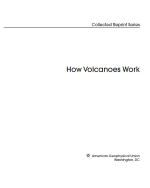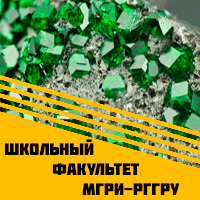Добрый день, Коллеги. Важное сообщение, просьба принять участие. Музей Ферсмана ищет помощь для реставрационных работ в помещении. Подробности по ссылке
How Volcanoes work / Как действуют вулканы
More than 80% of the Earth's surface is of volcanic origin, testifying that volcanism was a dominant process in the creation and evolution of our planet. From a human standpoint, volcanic eruptions have engendered fear, superstition, fascination, and scientific curiosity. Since the emergence of volcanology as a science in the nineteenth century, the question of "How Volcanoes Work" has been considered by many minds, particularly in the wake of the well-publicized and documented catastrophic 1883 eruption of Krakatau (Indonesia) recently reviewed by $imkin and Fiske [1983]. However, many more decades were to pass before scientists could begin to address seriously this fundamental question: by undertaking the needed systematic, long-term studies of volcanoes, in addition to short-term expeditions in response to specific volcanic events.
One individual in particular, Thomas A. Jaggar, Jr., played a pivotal role in transforming volcanology into the multidisciplinary science that it is today. He believed that in order to understand fully the eruptive and associated seismic phenomena, volcanoes must be observed and measured "inside and out with all of science to help" [Jaggar, 1941] between as well as during eruptions. Jaggar studied firsthand the devastating impact of the 1902 eruption of Mont Pe16e (Martinique) as a member of the scientific team sent here. From this experience, he strongly advocated that improved insights into how volcanoes work could, and should, be applied to mitigate volcanic hazards, as well as to advance scientific knowledge. In January 1912, with the support of the Hawaiian Volcano Research Association, a group of Hawaiian businessmen, and the Whitney Fund of the Massachusetts Institute of Technology, Jaggar founded the Hawaiian Volcano Observatory (HVO) on the rim of Kilauea caldera [Apple, 1987]. Many kinds of geochemical and geophysical tools, including measurement techniques and instrumentation, initially developed at HVO by Jaggar and his associatesto study Kilauea volcano have since beena doptedo r modifiedfo r usei n the investigatioonf many of the Earth's other active volcanoes. <...>




